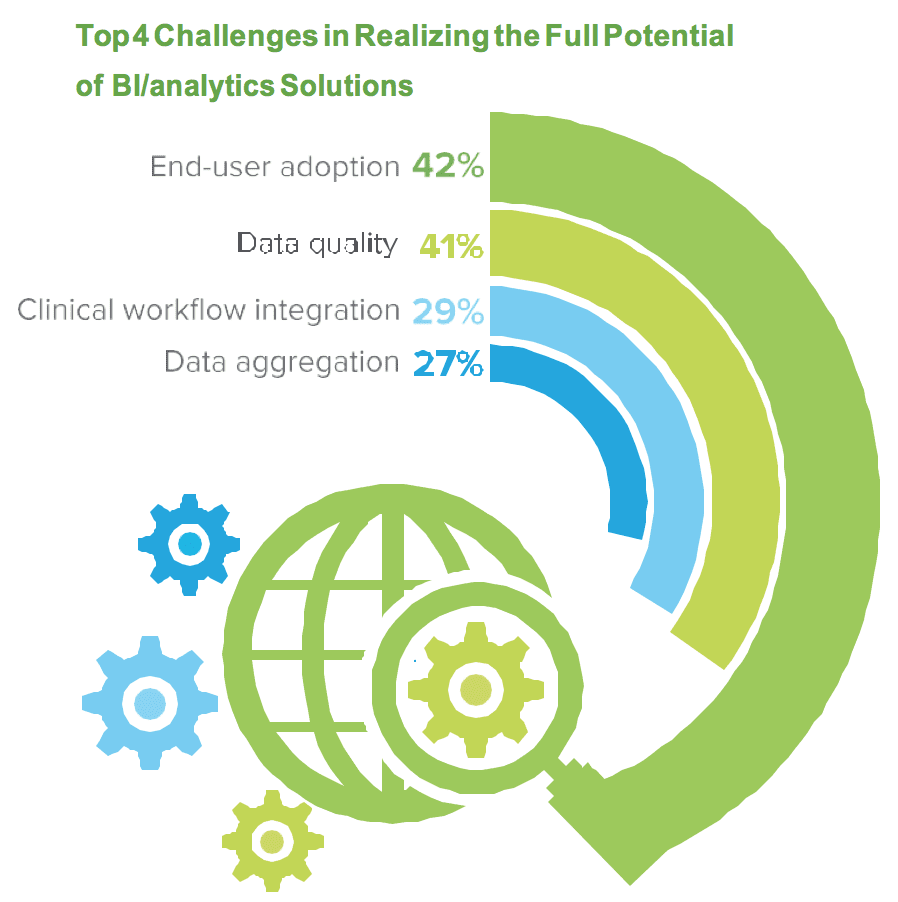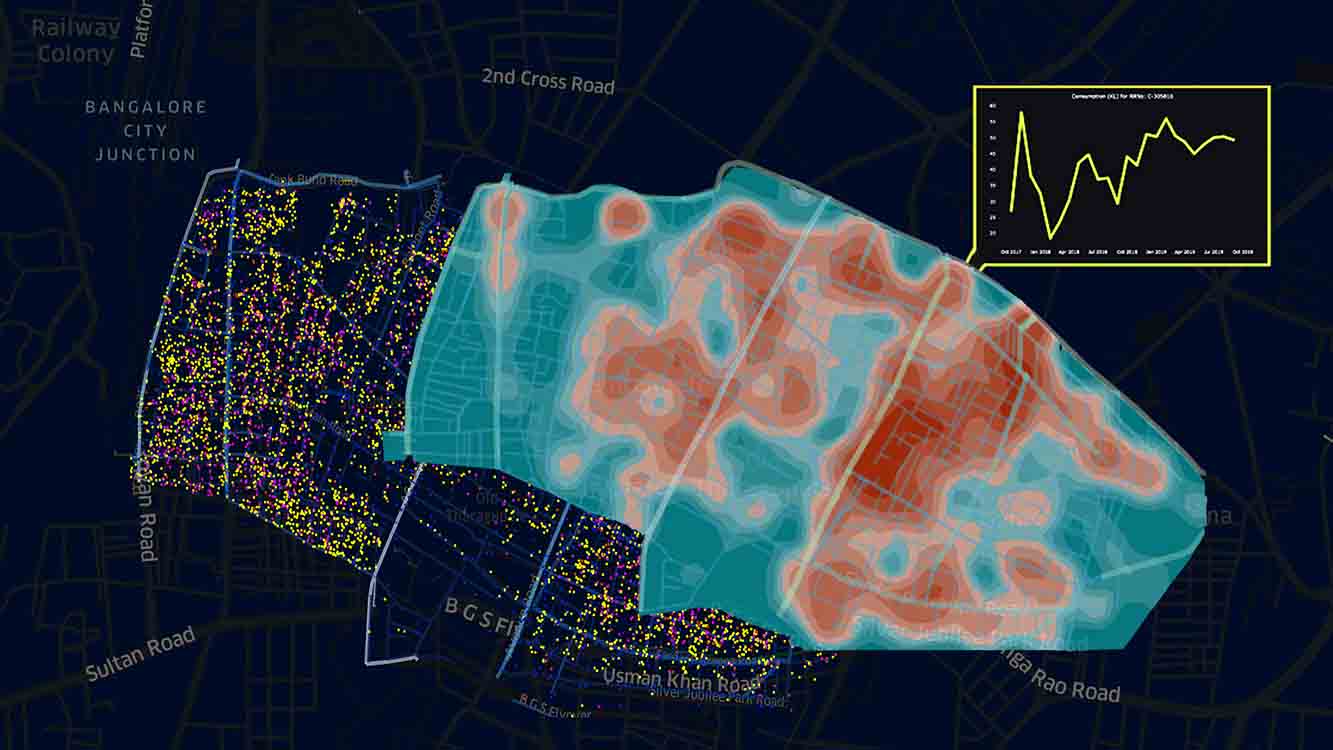Healthcare organizations are, or will soon be, producing petabytes of valuable data from their financial, clinical and business systems. But the ability to transform these massive data sets into actionable insights requires business intelligence (BI) and analytics tools that can uncover the hidden relationships among varied sources of information, provide rich visualizations of trends and don’t require end-users to be trained data scientists.
Qlik, a leader in visual analytics serving 36,000 customers around the world across all major industries, recently partnered with HIMSS Analytics to undertake a global study of the use of BI and analytics in healthcare. The goal — to provide healthcare professionals with insight into how their colleagues leverage analytics today, and the common barriers they face in gaining meaningful insights from the data they produce.
The findings suggest that the future of healthcare analytics is both promising and challenging. Early adopters report that the right business intelligence tools — in the right hands — can improve individual patient care, reduce healthcare costs significantly, meet reporting requirements and drive new opportunities to enhance population health. But this study also shows that many healthcare providers have just scratched the surface when it comes to unlocking the inherent value of their data. They recognize this and are looking for new ways to generate greater insights and value.
About the study
The study was fielded in August and September 2015 and surveyed more than 400 C-suite, vice president and director level contacts from clinical, financial, operational, technological and executive areas of expertise.
Respondents included healthcare providers from North American, European and Asia Pacific countries.
For the purposes of the study, a BI or analytics solution was defined as a solution that identifies, extracts and analyzes business data (such as revenue by department) to support business decision making, and clinical data (such as patient readmission rates or lab results) to support healthcare decision-making. Among all respondents, 55.7 percent reported having implemented such a solution, while 32.7 percent had not. The remaining 11.6 percent were unsure.1 Four key areas were then explored: (1) the level of maturity across a variety of use cases; (2) the value that has been realized from current initiatives; (3) the challenges experienced by providers as they seek to implement analytics in their organizations; and (4) future investment plans in healthcare analytics.
Among the high-level takeaways is that while many healthcare leaders have stuck their toes in the water, relatively few have begun to exploit the full power of BI and analytics. “It certainly is not mature,” observed John Hoyt, Executive Vice President, HIMSS Analytics. “I would say it is developing… It has some mature clients, but those tend to be the bigger integrated delivery networks.”
Maturity and value
Overall, the study found that the maturity level for most use cases of BI and analytics is relatively moderate. But as is often the case, generalizing can obscure important truths.
“While analytics is front and center in healthcare, maturity can vary by solution areas — driven in large part by local and regional pressures,” explained David Bolton, Qlik’s Global Director for Industry Solutions in Government and Healthcare.
Not surprisingly, then, the survey found that the most mature BI use cases for US respondents include meaningful use, reducing the average length of stay and clinical benchmarking — all priorities that are being driven by the Accountable Care Act. Here, insights that combine data from multiple sources can really make a difference. For example, an academic medical center in Kentucky used visual analytics to identify clinical variations that, in turn, impacted bed nights. By emphasizing best practices to outliers, the hospital not only reduced its average length of stay, but also improved patient-satisfaction scores.
Other uses for BI with mature statuses for US respondents included readmissions and OR/ER utilization rates, for which two-thirds of the respondents described their efforts as “advanced” or “moderate.” Meanwhile, a little more than half described their supply-chain analytics use as “moderate” or better. Here, Bolton sees an opportunity for quick wins in spend analytics.
“In England, a group of National Health Service organizations combined in a procurement hub,” he said. “Using analytics, over two years they were able to identify and save more than $40 million.”
Perhaps the flip side of spend analytics is BI designed to achieve cost savings. Most survey respondents cited that as their top BI/analytics benefit. In fact, saving money led the list of benefits cited for clinical, operations and financial experts. Technologists rated “faster and more accurate decision-making” as their top benefit, while executives said “increased internal transparency” represented their highest benefit.
Hoyt isn’t surprised that clinicians, operations and financial experts agree that BI and analytics implementations can drive significant savings. “The BI benefits are in quality improvements and driving out waste,” Hoyt said, “and often, improving quality reduces unnecessary cost.”
Other frequently cited benefits in the study include, by area of expertise:
- Clinical – workflow efficiencies, chronic disease management, faster and more accurate decision-making;
- Operations – supply efficiencies and increased transparency (related to staffing levels);
- Finance – faster and more accurate decisions and reductions in A/R days;
- Technology – reduction in tech infrastructure and infrastructure cost: easier integration of disparate data sources;
- Executive – operational, clinical and financial efficiencies.
Challenges
Given the value and opportunities presented by BI, the study sought to understand why adoption and maturity weren’t more advanced. In part, Hoyt argued, it is a matter of definition: If you’re not using a dedicated analytics tool, some might ask, are you really doing analytics, or something else? Some healthcare organizations — especially smaller ones — struggle with the cost of advanced solutions but still use spreadsheets and manual processes to analyze data.
Other organizations are using the historical approach, where decision-makers request tables and number- crunchers produce them, often in PDF format with weeks- old or even months-old data.
In contrast, contemporary BI and analytics tools can provide real-time, query-able data and are simple enough for self-service. “It changes the decision-making process,” said Bolton. “It doesn’t just speed it up. It creates greater confidence in decisions.”
Aside from the definitional issues, respondents offer a long list of challenges they faced during their BI deployment.
The most frequent was end-user adoption, followed by limitations of dashboard capabilities, variations in data quality, clinical workflow integration and data aggregation. And then there’s cultural resistance. “Physicians may say, ‘We’re not data scientists, just tell us the results,’” said Bolton. “But visual analytics turns that on its head. You get the data when you want it, you get what you want and you can ask questions of it. You don’t need to be a data scientist.”
Top 4 Challenges in Realizing the Full Potential of BI/analytics Solutions
Future investments
So what does the immediate future hold for business intelligence and analytics? In the United States,
the top BI priority over the next 12 to 24 months is the ICD-10 transition. That is followed by population health management and integrating analytics with existing solutions.
Among global respondents, BI and analytics dashboard development was the most reported investment priority in the next 12 to 24 months, followed by BI/analytics integration with existing solutions.
Given the potential return on data that healthcare organizations are already producing, the study suggests both continuity and change in healthcare analytics: continuing investment in new tools that can simplify data analysis for end-users, and ongoing changes in maturity and applications.
Investment Priorities for BI/Analytics – International vs. United States
Summary
The results of the study offer actionable insight for healthcare providers seeking to implement business intelligence and visual analytics solutions. As the study suggests, while many have identified specific use cases for proof points and tactical wins, further value can be gained by maintaining a long-term strategy that provides intuitive self-service solutions that ensure end-user adoption.






















































































